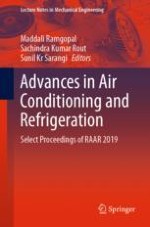2021 | OriginalPaper | Buchkapitel
Prospect of a Fully Solar Energy-Driven Compact Cold Store for Low Income Farming Communities
verfasst von : Sachindra Kumar Rout, Madhu Kalyan Reddy Pulagam, Sunil Kr Sarangi
Erschienen in: Advances in Air Conditioning and Refrigeration
Verlag: Springer Singapore
Aktivieren Sie unsere intelligente Suche, um passende Fachinhalte oder Patente zu finden.
Wählen Sie Textabschnitte aus um mit Künstlicher Intelligenz passenden Patente zu finden. powered by
Markieren Sie Textabschnitte, um KI-gestützt weitere passende Inhalte zu finden. powered by
